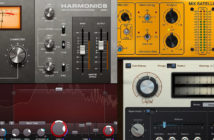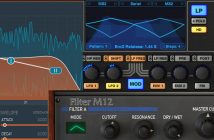In Part 1 we looked at the key ways in which references tracks can really benefit your productions.
But how do you choose the right track for the job?
Here are 7 steps that will help you pin-point tracks in your collection that would be great references for your own music:
1. Make a distinction between a good reference mix and your favourite track:
A good mix will meet certain relatively objective standards of clarity and power, with a balanced frequency response, and should sound good on almost any playback system, from your studio montitors to the car to your iPhone speaker.
Don’t use a track for this purpose that you like purely because of the hook or the melody, or some other aspect that won’t actually help you meet your mix objectives.
2. Use recent tracks:
If you’re making a track in 2012, don’t use tracks from 1998 as your main references. Production styles and standards change and improve over time, and old tracks just won’t cut it as references if you want to sound current. This is doubly important in fast-changing genres like house or techno, where every few months the sound of the moment can change significantly.
3. Use tracks from the same genre:
Leading on from the last point, use relevent reference tracks. If you’re aiming to make a pop track destined for radio, don’t use a club track as your main reference. Each genre or sub-genre has it’s own mix conventions and styles, and you don’t want to make trouble for yourself by inadvertently referring to one style while trying to mix in another.
(I say inadvertently there because you can get the greatest, original sounds by drawing on influences from other musical genres – just do it intentionally!).
4. Avoid very distinctive, ‘signature’ tracks from other artists:
It’s generally better not to use tracks whose sound and production is very closely linked to a particular artist, and them only – you might struggle to take anything useful from them without ending up simply sounding like you’re just ripping them off.
Better to use a few tracks that have something timeless about them, that are great examples of your chosen genre as a whole. This may be the only time I’ll ever say this, but here, generic is useful.
5. Avoid very busy tracks:
Tracks where it’s difficult to hear what’s actually happening because there are so many elements are going to make for frustrating references. Go for sparser arrangements, which you can deconstruct more easily. (If you can’t hear everything clearly, it’s probably not a very good mix anyway.)
6. Use tracks with interesting dynamics:
If you use a track that has plenty of changes and differences between sections – loud/quiet, very full and sparse sections etc. you’ll learn more about track construction as you go. It can be like having two or three reference tracks in one!
1. Use your own previous tracks:
Ideally, have one of your own previous mixes as a reference: you know it’s construction probably better than any other track, and it won’t be mastered like your other, commercial references, which makes comparisons a little more useful.
Hopefully now you’ve got a very small selection of potential reference tracks with which to work. But they won’t be much use without some analysis, to deconstruct how they work and find some patterns and techniques that you can apply to your own music.
So in the final part, we’ll look at How To Effectively Analyze Your Reference Tracks In 6 Steps >>





1 Comment
“Dont use tracks reference tracks from 1998” if you are making a track in 2012 you state under point 2. This is to inform you that your advice in this aspect is totally wrong. Important is to use a reference track that is not only well recorded, mixed and mastered but also played by real professional. musicians with real instruments. Do not use kids stuff and/or industrial rubbish recorded by using loops etc. as a reference track.